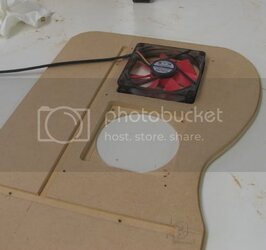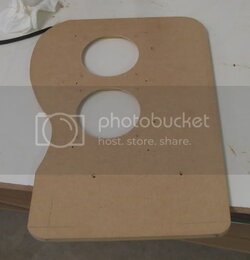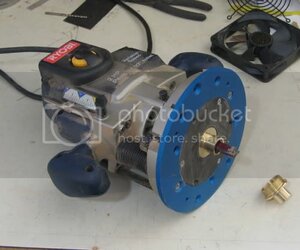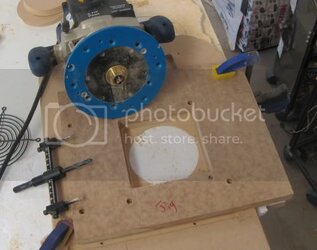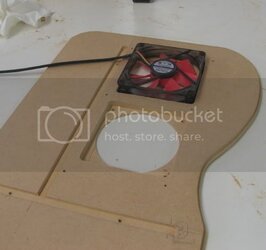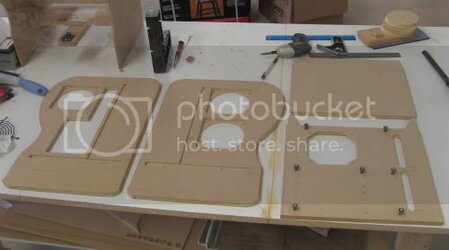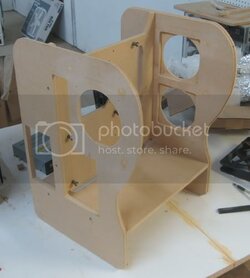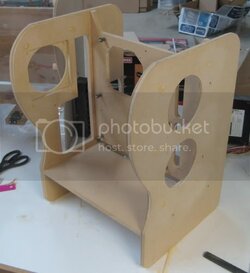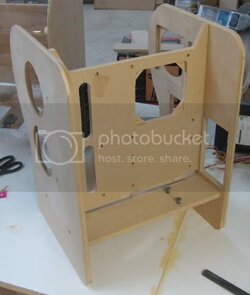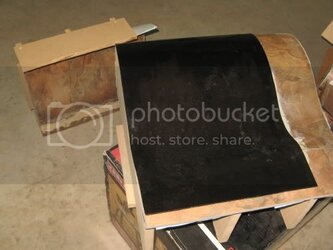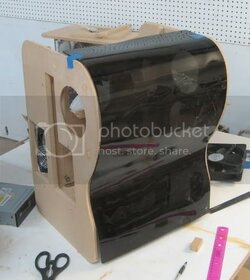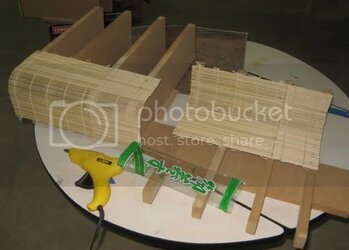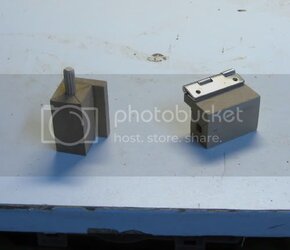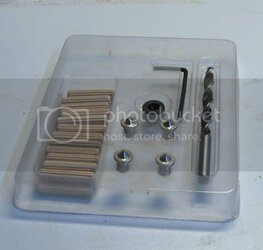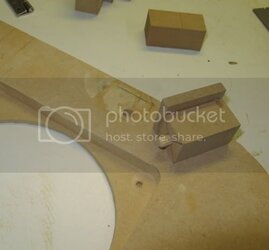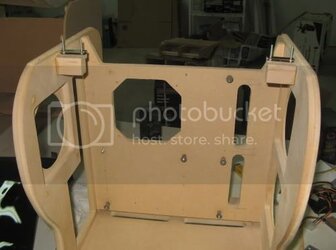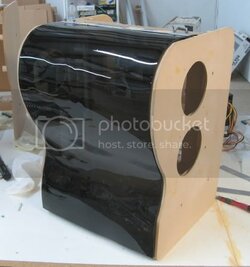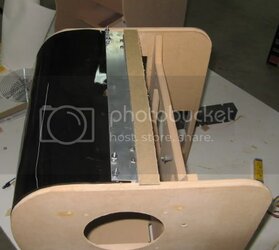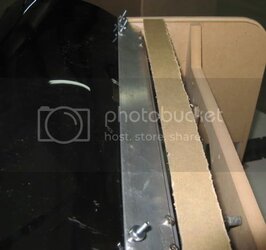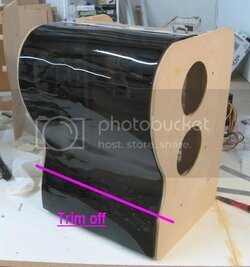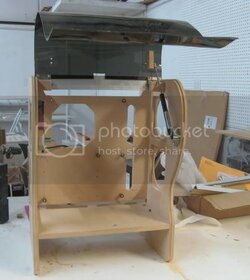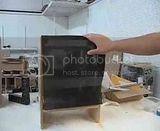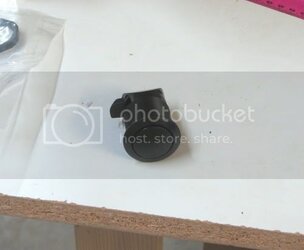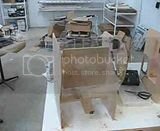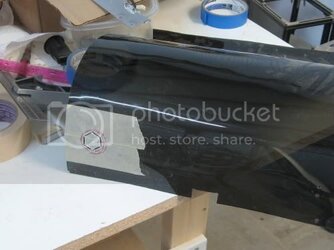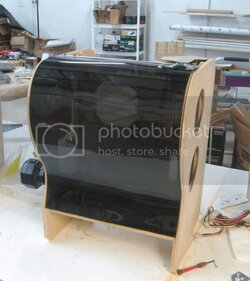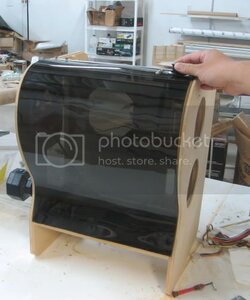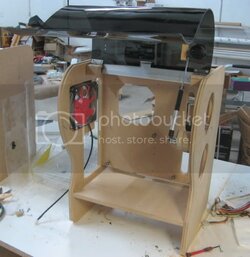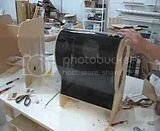- Joined
- Dec 7, 2003
- Thread Starter
- #21
Hallo! I am back and modding in full force!
jwalker. I try to make my project logs as detailed as possible, and I will answer any questions posted. Unfortunately a lot of my previous posts disappeared with the collapse of abit, RIP, and its forums. I have made a link set of what remains and am in the process of reposting what I can.
My mod links.
I get most of my modding stuff from performance-pcs. I shop around to find aesthetics stuff from sites like svc, jab-tech, crazypc, and xoxide.
Okay, everybody, sorry for the hiatus, but the shop is setup and modding again.
So, back to the Project R unit, and lets move forward.
The next task I wished to tackle was to see if it was possible to implement a self-opening system for my plastic front lid.
First I purchased a gas spring self-opening piston with the least amount of force I could find (5 lbs), from mcmaster. But it became pretty clear to me that this might involve some significant adjusting and geometry. I didn’t really want to put too many holes into my current build (altho not too difficult to repair).
In the past I’ve had some difficulties in a similar situation. For my Jewel Box Project, I was working on a method on having my lid open to a particular angle:
See post#35.
I ended up implementing a chain stop that ultimately failed, leaving me holes in my beautiful plastic lid.
Now MDF is very easy to repair, but I was not at all certain my plans for a self opening system would even work at all.
So what to do?
The simple answer, build a mockup. Since I’ve got templates and exact measures of all the pieces, building a quick and dirty replica took barely any time at all:

This was put together with some thin ¼” MDF and spare crossbars. The side pieces represent the outermost edge, the little round pieces space holders for the inner lip.
Next I fitted the plastic lid to the mockup, hinged with a pair of simple hinges at the top:

I also installed a push-to-open latch at the bottom to latch to lid in the down position.
Next I installed the piston rig.

The rig consists of a mount base with a pin, the piston, then a mount for the plastic lid.
And does it work?
You betcha! Here it is in the open position:

The movement is brisk but controlled, the force of the push a little stronger than necessary but hardly difficult.
Here is a video of the action in, well, action:

Its a photobucket link, somebody let me know if it doesn't work.
I am quite pleased—this was a fairly large hurdle overcome. I did have a backup plan (simple friction hinges, as in how laptop screens stay open). But this has such a cool factor!
.
jwalker. I try to make my project logs as detailed as possible, and I will answer any questions posted. Unfortunately a lot of my previous posts disappeared with the collapse of abit, RIP, and its forums. I have made a link set of what remains and am in the process of reposting what I can.
My mod links.
I get most of my modding stuff from performance-pcs. I shop around to find aesthetics stuff from sites like svc, jab-tech, crazypc, and xoxide.
Okay, everybody, sorry for the hiatus, but the shop is setup and modding again.
So, back to the Project R unit, and lets move forward.
The next task I wished to tackle was to see if it was possible to implement a self-opening system for my plastic front lid.
First I purchased a gas spring self-opening piston with the least amount of force I could find (5 lbs), from mcmaster. But it became pretty clear to me that this might involve some significant adjusting and geometry. I didn’t really want to put too many holes into my current build (altho not too difficult to repair).
In the past I’ve had some difficulties in a similar situation. For my Jewel Box Project, I was working on a method on having my lid open to a particular angle:
See post#35.
I ended up implementing a chain stop that ultimately failed, leaving me holes in my beautiful plastic lid.
Now MDF is very easy to repair, but I was not at all certain my plans for a self opening system would even work at all.
So what to do?
The simple answer, build a mockup. Since I’ve got templates and exact measures of all the pieces, building a quick and dirty replica took barely any time at all:
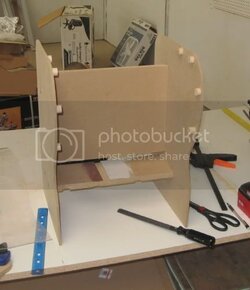
This was put together with some thin ¼” MDF and spare crossbars. The side pieces represent the outermost edge, the little round pieces space holders for the inner lip.
Next I fitted the plastic lid to the mockup, hinged with a pair of simple hinges at the top:
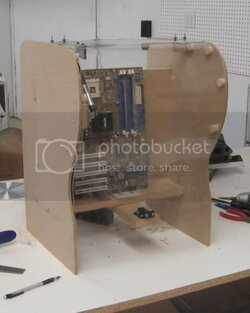
I also installed a push-to-open latch at the bottom to latch to lid in the down position.
Next I installed the piston rig.
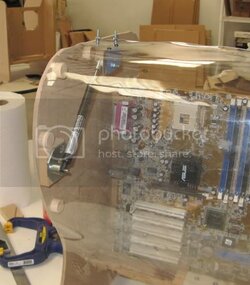
The rig consists of a mount base with a pin, the piston, then a mount for the plastic lid.
And does it work?
You betcha! Here it is in the open position:
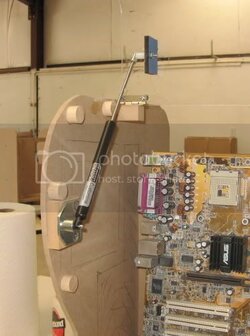
The movement is brisk but controlled, the force of the push a little stronger than necessary but hardly difficult.
Here is a video of the action in, well, action:
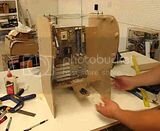
Its a photobucket link, somebody let me know if it doesn't work.
I am quite pleased—this was a fairly large hurdle overcome. I did have a backup plan (simple friction hinges, as in how laptop screens stay open). But this has such a cool factor!
.
